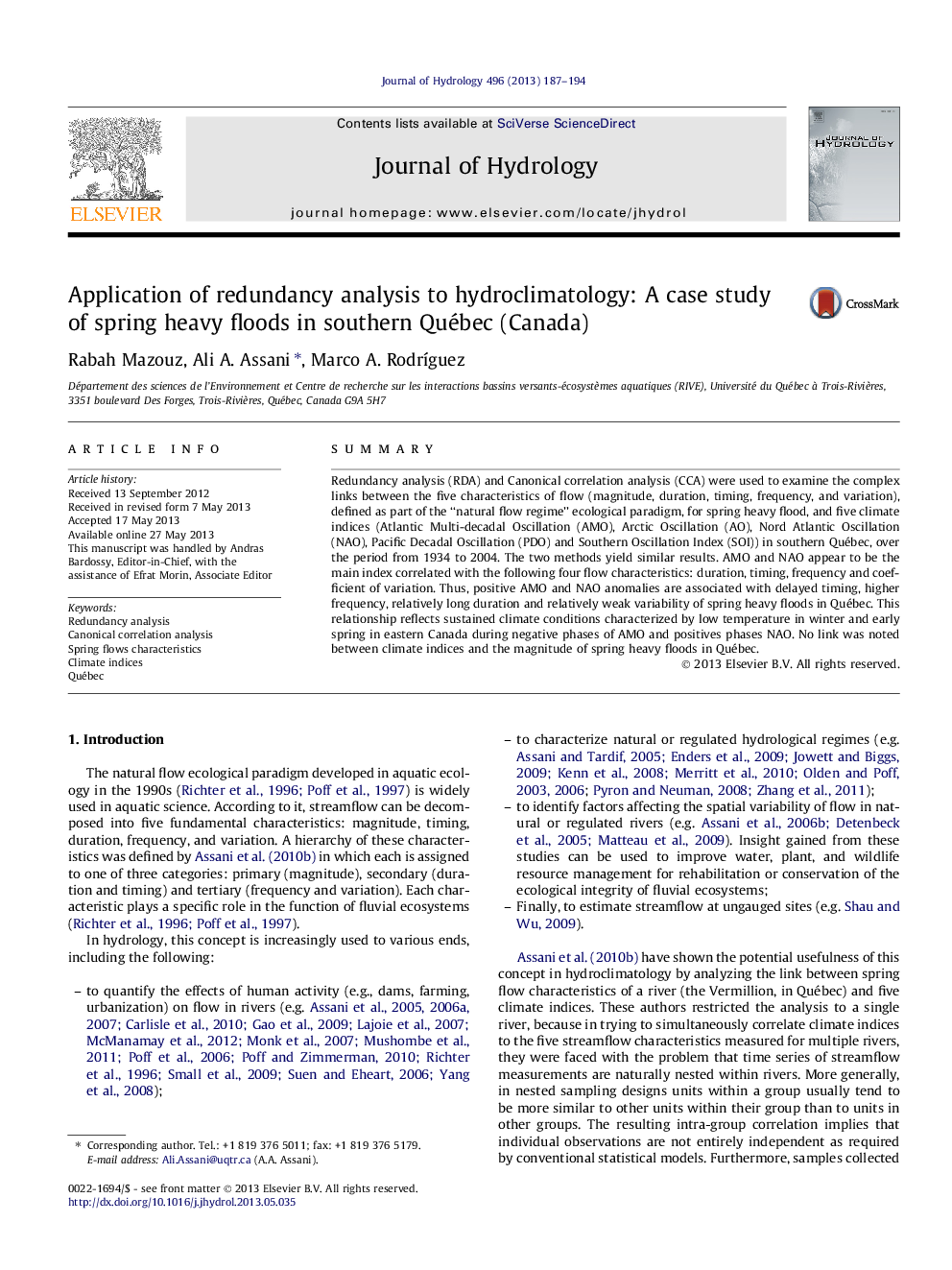| Article ID | Journal | Published Year | Pages | File Type |
|---|---|---|---|---|
| 6413737 | Journal of Hydrology | 2013 | 8 Pages |
â¢The link between spring flood characteristics and climate indices are explored by RDA.â¢AMO is negatively correlated to timing, duration, frequency and CV.â¢NAO is positively correlated to timing, duration and frequency.â¢NAO is negatively correlated to variability (CV).â¢Flood magnitude is not correlated to any climate indices.
SummaryRedundancy analysis (RDA) and Canonical correlation analysis (CCA) were used to examine the complex links between the five characteristics of flow (magnitude, duration, timing, frequency, and variation), defined as part of the “natural flow regime” ecological paradigm, for spring heavy flood, and five climate indices (Atlantic Multi-decadal Oscillation (AMO), Arctic Oscillation (AO), Nord Atlantic Oscillation (NAO), Pacific Decadal Oscillation (PDO) and Southern Oscillation Index (SOI)) in southern Québec, over the period from 1934 to 2004. The two methods yield similar results. AMO and NAO appear to be the main index correlated with the following four flow characteristics: duration, timing, frequency and coefficient of variation. Thus, positive AMO and NAO anomalies are associated with delayed timing, higher frequency, relatively long duration and relatively weak variability of spring heavy floods in Québec. This relationship reflects sustained climate conditions characterized by low temperature in winter and early spring in eastern Canada during negative phases of AMO and positives phases NAO. No link was noted between climate indices and the magnitude of spring heavy floods in Québec.
